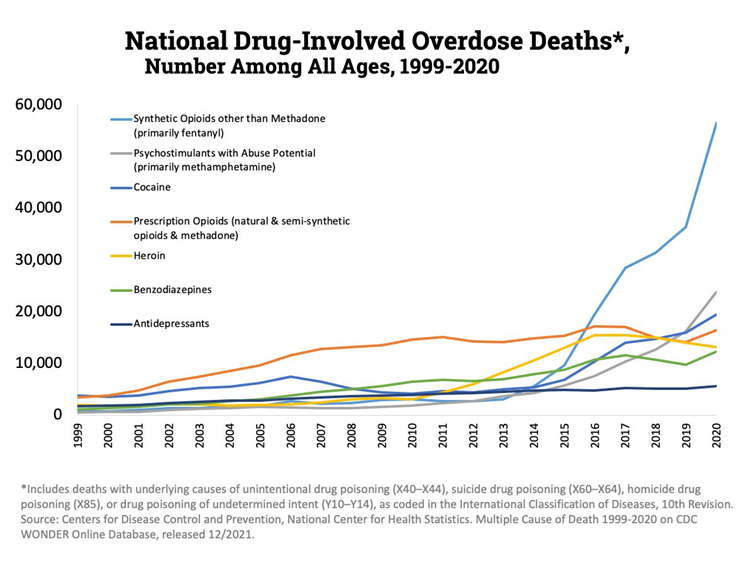
National Recovery Month: Risks, Signs, and Support
National Recovery Month was launched by the Substance Abuse and Mental Health Services Administration (SAMHSA) in 1989 and is observed every September to bring awareness, support treatment and recovery practices, and to highlight the dedication of professionals, providers, and communities who make recovery possible.
Addiction Can Affect Anyone
People from all backgrounds experience addiction regardless of race, gender, age, socioeconomics, or education. Addiction does not discriminate. There are intense cravings associated with addiction that can lead to dangerous practices such as using illegal drugs like heroin or cocaine, excessive alcohol drinking, using prescription drugs in ways other than prescribed, and using someone else’s prescription.
Once addicted, it’s very difficult to stop on your own since the chemical dependency is developed and brain chemistry has been changed. Addiction offers the brain an injection of dopamine that is so powerful that it is difficult to stop, and the drug's influence on dopamine reduces as tolerance develops. Even though it becomes evident that drug use is causing serious harm, addicts will face a very challenging road ahead to stop using.
According to provisional data released by the Center for Disease Control’s National Center for Health Statistics, more than 94,000 people died in the U.S of an overdose in 2020, a 30% increase from the prior year. This is a startling statistic, with this issue affecting individuals and families throughout the U.S, regardless of geographic location.

Understanding risk factors and early warning signs will increase awareness and help you recognize substance abuse problems early on.
Key Substance Addiction Risk Factors:
- Surrounded by family/friends who partake in substance abuse
- Social pressure from peers to engage in substance abuse
- Genetics/family history
- Mental health disorder
- Stress
- Early drug or alcohol use*
* The National Institute on Alcohol Abuse and Alcoholism conducted a survey that showed that young adults from the ages of 18 to 24 were more likely to have both drug addictions and alcohol use disorders.
Common forms of substance addiction disorders and early warning signs include:
Alcohol Use Disorder
Alcohol addiction disorder (or alcoholism) is characterized as frequent and/or heavy drinking. As an individual’s tolerance increases to alcohol intake, dependence can often occur, leading to physical health and mental health issues, along with family, social, and work-related problems. Alcohol abuse can take the form of binge drinking or long-term use. A study from the National Institute on Alcohol Abuse and Alcoholism (NIAAA), National Institutes of Health (NIH), and National Epidemiologic Survey on Alcohol and Related Conditions (NESARC) found that people who suffer from alcohol addiction can generally be categorized into five subtypes: young adult, functional, intermediate familial, young antisocial, and chronic severe. Regardless of gender, age, genetics, or status, alcohol abuse can have a harmful, lasting effect on the body and health of an individual, including depression, brain damage, psoriasis, anxiety, hand tremors, and more.
Warning signs of alcohol use disorder:
- Drinking alone
- Being unable to control alcohol intake
- Making excuses to drink
- Taking alcohol in more significant amounts or for more extended periods
- Needing more alcohol to get the effect desired (tolerance)
- Giving up important social, professional, and recreational activities
Narcotic and Opioid Use Disorder
Narcotics, which are a form of drugs commonly referred to as opioids, are highly addictive. Common narcotics include (but are not limited to) morphine, fentanyl, hydrocodone, oxycodone, heroin, and prescription pain drugs. Opioid drugs trigger dopamine responses in the brain, often causing reward and reinforcement responses leading to addiction. Someone suffering from a narcotics dependency will feel a powerful, compulsive urge to use opioid drugs, and it regularly leads to health, social, and economic problems. This addiction can cause life-threatening health issues, including overdose.
Warning signs of narcotic and opioid disorder:
- Showing signs of exhaustion, malaise
- Being nervous
- Quickly changing moods
- Drastically changing friends or social groups
- Experiencing financial hardship
- Meeting with multiple doctors to receive desired prescriptions
- Attending work or school on an erratic schedule
Tobacco and Nicotine Addiction Disorder
Overuse and dependency on tobacco and nicotine are common forms of addiction. These addictions can manifest in cigarette smoking, vaping, e-cigarettes, tobacco chewing, and more. The NIH states that, due to nicotine’s addictive properties, only about 6% of smokers quit each year.
Warning signs of nicotine dependency include:
- Inability to stop smoking or using, with attempts
- Intake continues despite health problems
- Disengagement from social activities that do not allow smoking or tobacco use
- Showing signs of withdrawal, including (but not limited to):
- Irritability
- Cravings
- Anxiety
- Increased appetite
Psychostimulant Addiction Disorder
Psychostimulants, which are substances that have mood-enhancing and stimulant properties, include drugs like cocaine, methamphetamine, Adderall, and Ritalin. Addiction to psychostimulants has become a significant concern in the United States and globally. The 2010 National Survey on Drug Use and Health reported that cocaine was the highest in past-year dependency and abuse. In recent years, there has been an increase in psychostimulant overdose, resulting from these drugs being laced with readily available and inexpensive Fentanyl.
Warning signs of psychostimulant abuse include:
- Restlessness
- Hyperactivity
- Weight loss
- Meeting with multiple doctors to receive desired prescriptions
- Aggressive behavior or anger outbursts
- Impulsive behavior
Support and Contact Information
The Substance Abuse and Mental Health Services Administration is the agency within the U.S. Department of Health and Human Services that leads public health efforts to advance the behavioral health of the nation. Addiction and substance abuse can be addressed with multiple forms of treatment, support groups, and recovery options. The type and level of treatment required for successful recovery vary depending on the individual and the substance used.
If you or someone you know needs help to stop using substances, call SAMHSA’s National Helpline at 1-800-662- HELP (4357). You can also text your zip code to 435748 (HELP4U), or use SAMHSA’s Behavioral Health Treatment Services Locator to get help.
Alcoholics Anonymous: https://www.aa.org/
Narcotics Anonymous: https://na.org/
Family Support Resources: https://www.samhsa.gov/families
Substance Abuse and Mental Health Services Administration: https://www.samhsa.gov/
